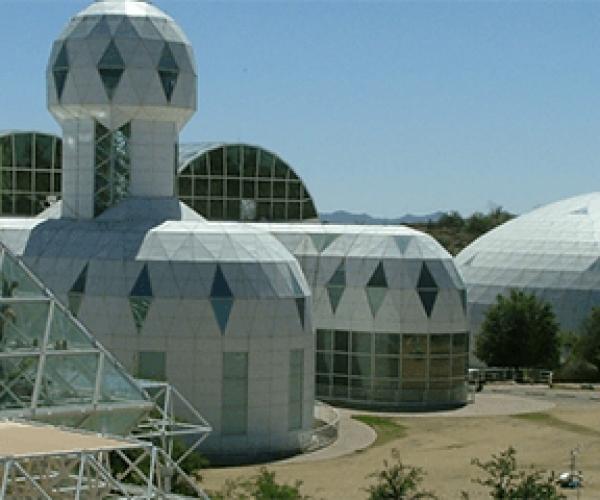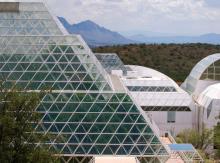
by Martin Wallace


by Martin Wallace

In October 2018, the Maker Literacies grant team was invited to attend the Synthesis and Design Workshop: Principles for the Equitable Design of Digitally-Distributed, Studio-Based STEM Learning Environments, held from February 25-28 at University of Arizona’s Biosphere 2. This gathering was one of nine NSF-funded immersion workshops held across the nation seeking ideas for rich and highly adaptable environments for learners that may:
Science, Technology, Engineering, and Mathematics (STEM) learning environments are at the heart of the NSF’s Dear Colleague Letter, which the above is an excerpt from, and the proposal for this workshop was a response to. Studio-based learning environments are a major component in STEM learning, such as machine shops and laboratories. School, library, and academic makerspaces comprise a growing segment of studio-based learning environments. Makerspaces tend to be more accessible and inclusive, and represent a broader diversity of users than the more traditional studio-based learning environments tucked away inside disciplinary silos like machine shops, painting studios, biology laboratories, and such.

Me with Biosphere 2 in background
To our great surprise, the University of Arizona’s proposal mentions our IMLS grant-funded Maker Competencies and the Undergraduate Curriculum work by name. We are humbled (and gratified!) that our program has gained recognition by UA researchers and that they invited us to share our experiences at this once-in-a-lifetime synthesis & design workshop.
Three of our grant team attended the three-day workshop: Tara Radniecki (University of Nevada, Reno), and Morgan Chiversand I (both at University of Texas at Arlington). In total, over 60 people from universities, libraries, museums, public schools, community non-profits and research centers came together to brainstorm and write funding recommendations to the National Science Foundation surrounding these five main strands:
A review, synthesis and summarization of documentation and artifacts captured at the workshop produced the following list of eleven themes:
While eleven does seem like a lot, we were careful to capture as many voices as possible and to narrow these down any further would lose some of the nuance and specificity that emerged from analysis of the materials, ultimately “erasing” some of those voices.
I am currently serving on the advisory board for the Biosphere 2 workshop and am helping write a literature review for a white paper in preparation for an August summit. Leaders from each of the nine workshops will meet in Washington, D. C. to compare and further synthesize their findings. This culminating event will distill outcomes from each of the workshops into a coherent recommendation to the NSF for future funding goals. It will be interesting to see how our recommendations compare to findings at other workshops. Will there be a lot of overlap in themes? Or what if every workshop arrives with eleven completely unique themes? If and when I find out, I’ll let you know!
Please also check out this STEM for All video that focuses on our time together at the STEM Equity @B2 project https://stemforall2019.videohall.com/p/1561. Please share the video link widely in your social media with #stemvideohall.
Comments
I agree that the key point…
I agree that the key point is what Mel King said: "If we want a society and culture that work for everyone, we need innovation in our relationships along with innovation in the STEM fields and STEM education[https://www.liysf.org.uk/liysf/liysf-2021]". As an educator my worry is to build caring (educational or not) relationships with my students in order to improve their curiosity and research skills. There are ideas, concepts, and practices in the maker movement that help me to improve the participation of my students in the creation of shared knowledge. I mean the idea of remix, share designs, open tools, the constructionism, the community, the philosophy of DWO, etc. But there are several attitudes that are not helping me at all, for example, the need for the latest super powerful technology gadget as the main concern, the vision of technology like exclusively functional(not poetic) and the focus on the product forgetting that in learning the thing that really matters is the process.
Add new comment